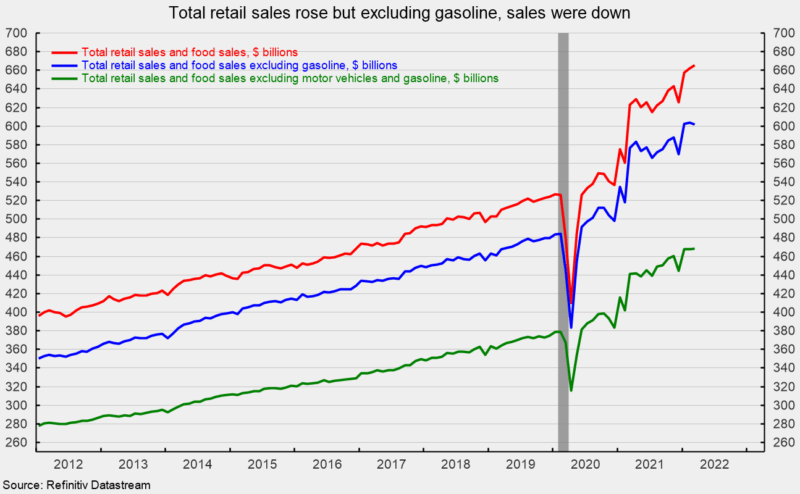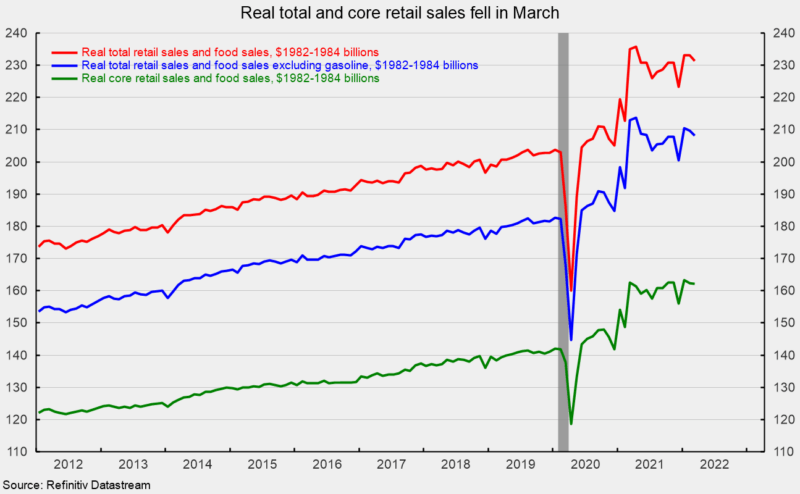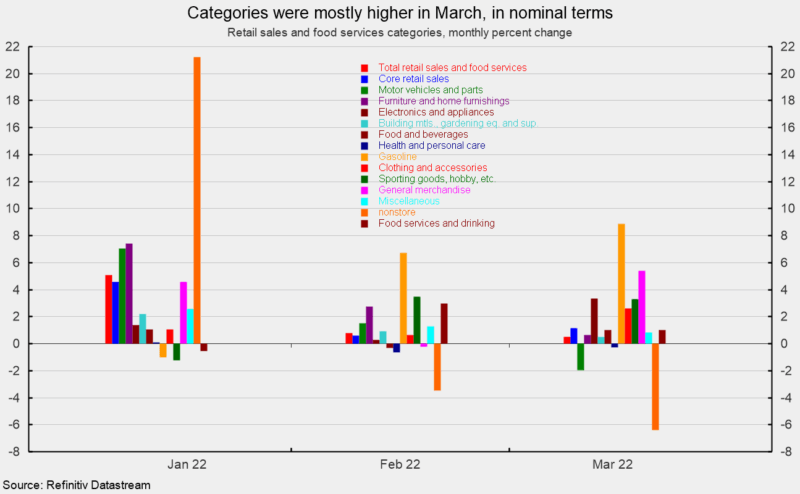By Robert Hughes
sweetandsour/E+ via Getty Images Total Retail Sales (Refinitiv Datastream) Real total and core retail sales (Refinitiv Datastream)


Retail sales and food-services spending rose 0.5 percent in March following a 0.8 percent gain in February (see first chart). However, today’s retail sales data are not adjusted for price changes. In real terms, total retail sales were down 0.7 percent (adjusted using the CPI). Still, total retail sales are up 6.9 percent from a year ago while real retail sales are down 1.5 percent.
Core retail sales, which exclude motor vehicle dealers and gasoline retailers, rose 0.2 percent for the month, following a 0.1 percent decline in February (see first chart). The decline leaves that measure with a 6.2 percent gain from a year ago. After adjusting for price changes, real core retail sales fell 0.2 percent in March and are down 0.3 percent from a year ago (see second chart).
Categories higher in March (Refinitiv Datastream)
Non-store retailers led the decliners, down 6.4 percent, followed by motor vehicles sales, off 1.9 percent, and health and personal care store sales, down 0.3 percent (see third chart).
Overall, total nominal retail sales rose for the month, lifted by rising prices, especially for gasoline. However, in real terms, total and core retail sales fell. Furthermore, real total and real core retail sales are essentially unchanged from a year ago.
Continuing labor shortages, along with materials shortages and logistical issues, are likely to continue to slow the recovery in production across the economy and sustain upward pressure on prices. In addition, geopolitical and global economic turmoil as a result of the Russian invasion of Ukraine has had a dramatic impact on capital and commodity markets, launching a new wave of disruptions to businesses while a new Fed tightening cycle will likely weigh on future economic activity. The outlook has become highly uncertain.
Editor’s Note: The summary bullets for this article were chosen by Seeking Alpha editors.


Be the first to comment